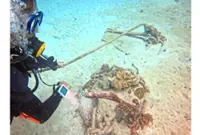CARDIOPULMONARY resuscitation (CPR) is a time-critical emergency procedure that saves lives, and everyone should be equipped with the skill.
Recently, a 17-year-old disabled boy was resuscitated after receiving CPR assistance from members of the public and was taken to a hospital.
Already a subscriber? Log in
Save 30% OFF The Star Digital Access
Cancel anytime. Ad-free. Unlimited access with perks.





